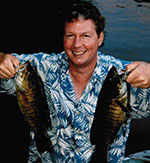For Inuit and other indigenous peoples in Canada’s North, hunting and fishing remain vitally important. About 30 per cent of their diet consists of so-called country food, or animals harvested from land or sea. Country food is also traditionally shared, both within and across communities, forming the basis of a social economy that ensures universal access to protein and reinforces cultural bonds between people — even those living thousands of kilometres apart.
“These regional food-sharing networks are absolutely amazing,” says David Natcher, director of the Indigenous Land Management Institute at the University of Saskatchewan and a leading expert on the ways and means by which country food is harvested and shared.
Natcher’s research has shown, for instance, that the Inuit village of Kangiqsualujjuaq in Nunavik, northern Quebec, exchanges food with surrounding communities more than 500 times per year, and that meat harvested in Nunavik is shipped as far south as Montreal. “It’s a way of connecting people who’ve left their communities to their kinships and villages,” he explains.
As extensive and well-established as these social networks are, however, they’re vulnerable to disruption as the North increasingly focuses on resource extraction and the wage economy. If harvesters in a northern community abandon hunting in favour of the wage economy, “what happens to all the other communities in the region that depended on food coming from Kangiqsualujjuaq?” asks Natcher. “I don’t know if we’re really considering the downstream connected effects of industrialization.”
Rather than focusing solely on developing the wage economy, Natcher says it’s important to recognize the value of the social economy, and to ensure that subsistence harvesting remains viable. Wage and social economies are linked — hunters need a source of money to buy equipment and supplies, after all. “Putting a new mine in and getting everyone working at it is not the answer. It’s going to wear on the cultural viability of northern communities.”
Natcher’s work aims to find the right balance.
This is the latest in a continuing blog series on polar issues and research presented by
Canadian Geographic in partnership with the Canadian Polar Commission. The polar blog will appear online every two weeks, and select blog posts will be featured in upcoming issues. For more information on the Canadian Polar Commission, visit
polarcom.gc.ca.







